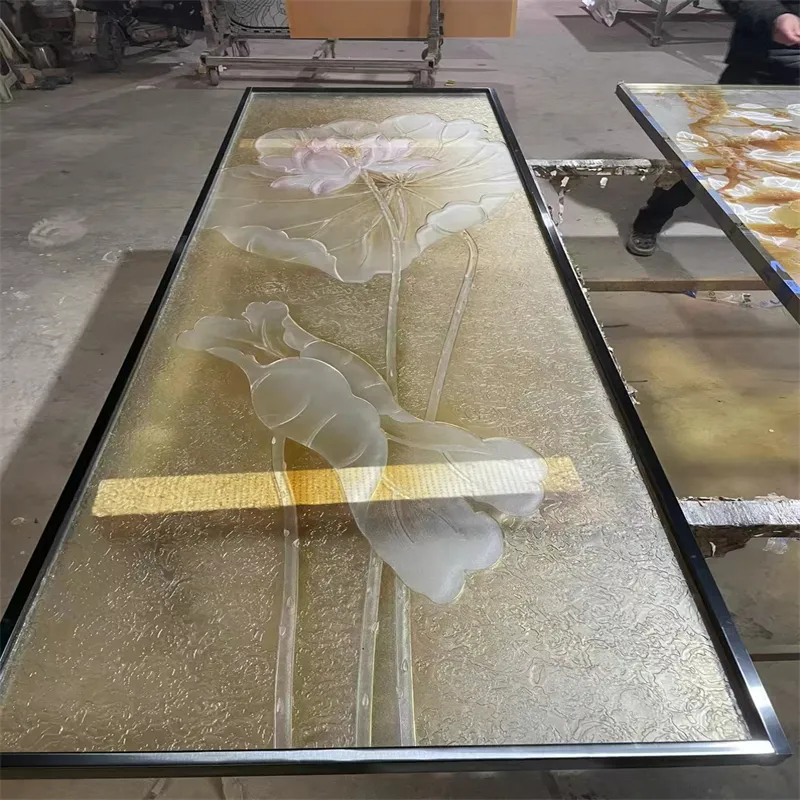Dec . 12, 2024 11:35 Back to list
tempered glass production
The Production of Tempered Glass A Comprehensive Overview
Tempered glass, also known as toughened glass, is a modern marvel in the field of materials science and engineering. Its unique properties make it an essential component in various applications, from architecture to automotive manufacturing. This article delves into the production process of tempered glass, highlighting the methods, benefits, and safety features associated with this remarkable material.
Understanding Tempered Glass
Tempered glass is produced through a process of extreme heating followed by rapid cooling. This process enhances the glass's strength and thermal resistance, making it significantly more durable than standard glass. The primary characteristic of tempered glass is its ability to shatter into small, blunt pieces rather than sharp shards, reducing the risk of injury in the event of breakage.
The Production Process
The production of tempered glass can be broken down into several essential steps
1. Selection of Raw Materials The initial stage involves selecting high-quality raw materials. Typically, the base glass used is either float glass or low-iron glass, which is chosen for its clarity and durability.
2. Cutting and Shaping After selecting the raw material, the glass is cut to the desired dimensions using precision cutting tools. This step is crucial as it determines the size and shape of the final product. After cutting, the edges are often polished to remove any sharp or jagged portions.
3. Cleaning The cut glass sheets are thoroughly cleaned to remove any dust, grease, or contaminants. This step is vital, as impurities can adversely affect the tempering process and the final quality of the glass.
4. Heating The cleaning glass sheets are then placed in a tempering furnace, where they are heated to approximately 600-700 degrees Celsius (1112-1292 degrees Fahrenheit). This high temperature induces a state of physical stress within the glass.
5. Cooling Once the glass reaches the desired temperature, it is rapidly cooled using a process called quenching. In this stage, jets of cool air are blown onto the surface of the glass, creating a significant temperature gradient. This rapid cooling increases the strength of the outer surface while the inner layer remains at a higher temperature, resulting in the desired compression stress.
tempered glass production

6. Quality Control After tempering, the glass undergoes rigorous quality control tests. These tests assess strength, thickness, and clarity to ensure that the final product meets industry standards and safety regulations.
7. Final Inspection and Packaging The final stage involves checking for any defects and packaging the tempered glass for distribution. Proper packaging is crucial to prevent damage during transit.
Benefits of Tempered Glass
The production process of tempered glass imparts various benefits, including
- Increased Strength Tempered glass is up to five times stronger than standard glass of the same thickness, making it ideal for high-stress applications such as large windows and shower doors.
- Thermal Resistance The ability to withstand sudden temperature changes makes tempered glass suitable for environments with fluctuating temperatures, such as facades in skyscrapers.
- Safety Features In the event of breakage, the glass shatters into small, rounded pieces, minimizing the risk of injury to individuals nearby.
- Energy Efficiency Tempered glass often comes with energy-efficient coatings, helping to regulate indoor temperatures and reduce energy costs.
Conclusion
Tempered glass plays a crucial role in various sectors, providing safety and durability in products used daily. Understanding its production process not only highlights the complexity involved but also underscores the material's impressive attributes. As technology advances, the future of tempered glass production looks promising, paving the way for even more innovative applications and solutions in the world of glass manufacturing.
-
Safety and Style with Premium Laminated Glass Solutions
NewsJun.24,2025
-
Reinvents Security with Premium Wired Glass
NewsJun.24,2025
-
Premium Float Glass Line for Modern Architecture
NewsJun.24,2025
-
Low Emissivity Glass for Energy-Efficient Architecture
NewsJun.24,2025
-
High-Performance Insulated Glass Solutions for Modern Architecture
NewsJun.24,2025
-
Elevates Interior Style with Premium Silver Mirror
NewsJun.24,2025
Related PRODUCTS














